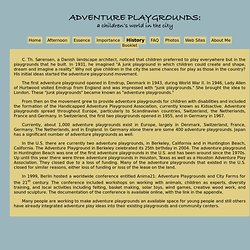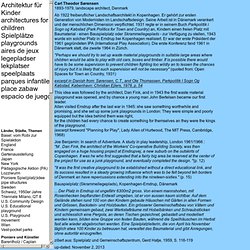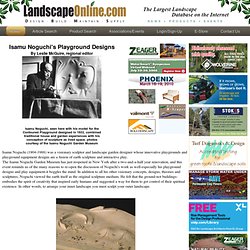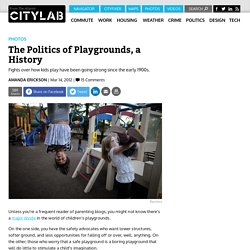

Museum Specimens Find New Life Online. Advertisement Continue reading the main story Video BERLIN — In a brightly lit room on the third floor of the Museum of Natural History here, stacks of wooden drawers are covered in glass, some panes so dusty that it is difficult to discern exactly what’s inside.

When the glass is removed, rows of carefully pinned insects are revealed, gleaming in brilliant colors like precious jewels. The biologist Alexander Kroupa plucks an amethyst-colored beetle from the drawers with metal pincers. “Amazing, right?” Mr. For years, scientific institutions have scanned images of specimen drawers or individuals in their collections. Continue reading the main story By looking at the historical distribution of a species as revealed in the collections, for example, scientists can determine how the ecology of a region has changed because of industrialization, human settlement or . It is slow, painstaking work. Photo Some of them are type specimens — individuals used to characterize their species.
Architektur für Kinder. La impresionante aventura vital de Sebastião Salgado. La impresionante aventura vital de Sebastião Salgado ‘LA SAL DE LA TIERRA’ / El impresionante y conmovedor recorrido vital y profesional del prestigioso fotógrafo brasileño Sebastião Salgado.

Premio del Público en el Festival de San Sebastián y Premio Especial del Jurado de la Sección Una Cierta Mirada y Premio del Jurado Ecuménico en el Festival de Cine de Cannes. “Tenía unas ganas locas de enseñar estas imágenes, de mostrar que una gran cantidad de personas vivía en la miseria”, dice en un momento de esta película el fotógrafo Sebastião Salgado, un hombre que ha dedicado más de cuarenta años de su vida a observar el mundo y mostrárselo a los demás.
Playscapes - All the Best Playgrounds are Here. Parque Bicentenario de la Infancia. Studio Nomad. Abril 2014. The Noguchi Museum. Summer - on a children's city playground. Adventure Playgrounds: A Children's World in the City. C.

Th. Adventure Playgrounds: A Children's World in the City. Children learn through contact — direct contact with different environments, materials, and people.

They learn through their relationships with other adults and children, they learn by doing things and manipulating their environments. At adventure playgrounds children gain knowledge through experience-based learning, by thinking through problems and ideas with adults and other children. Children's ideas inspire the creation of their own activities, structures, and games. Advenure playgrounds might be initiated by adults, but they are invented by young people.
Children build the structures, create the activities, and in turn have an immediate impact on the nature of the playground. Community is important for children and for adults. Architektur für Kinder. Carl Theodor Sørensen 1893-1979, landscape architect, Denmark Ab 1922 freiberuflicher Landschaftsarchitekt in Kopenhagen.

Er gehört zur ersten Generation von Modernisten im Landschaftsdesign. Seine Arbeit ist in Dänemark verankert und der menschlichen Dimension verpflichtet. 1931 regte er in seinem Buch Parkpolitik i Sogn og Købstad (Park Politics for Town and Country) an, Kindern einen freien Platz mit Baumaterial - einen Bauspielplatz oder Skrammellegeplads - zur Verfügung zu stellen, 1943 wurde ein solcher Platz in Emdrup bei Kopenhagen realisiert. Er war der erste Präsident der 1961 gegründeten IPA (International Play Association).
Die erste Konferenz fand 1961 in Dänemark statt, die zweite 1964 in Zürich. "Perhaps we should try to set up waste material playgrounds in suitable large areas where children would be able to play with old cars, boxes and timber. Excerpt in Danish from: Sørensen, C.T., and Ole Thomassen. Joe Benjamin: In search of Adventure. LandscapeOnline.com. Isamu Noguchi (1904-1988) was a visionary sculptor and landscape garden designer whose innovative playgrounds and playground equipment designs are a fusion of earth sculpture and interactive play.

The Isamu Noguchi Garden Museum has just reopened in New York after a two-and-a-half year renovation, and this event reminds us of the many reasons to re-open the discussion of Noguchi's work as well-especially his playground designs and play equipment-it boggles the mind. In addition to all his other visionary concepts, designs, theories and sculptures, Noguchi viewed the earth itself as the original sculpture medium. He felt that the ground-not buildings-embodies the spirit of creativity that inspired early humans and suggested a way for them to get control of their spiritual existence.
In other words, to arrange your inner landscape you must sculpt your outer landscape. Effigy mounds sculpted in the shape of animals and birds were often constructed by ancient Native American peoples. The Politics of Playgrounds, a History. Unless you're a frequent reader of parenting blogs, you might not know there's a major divide in the world of children's playgrounds.

On the one side, you have the safety advocates who want lower structures, softer ground, and less opportunities for falling off or over, well, anything. On the other, those who worry that a safe playground is a boring playground that will do little to stimulate a child's imagination. The debate can seem quite technical – should playgrounds have foam floors, or wood chips? What would be better for the 5-year-olds who tumble off the monkey bars? How We Came to Play: The History of Playgrounds - PreservationNation Blog. By Kaitlin O’Shea, Preservation in Pink Giant Stride ca. 1910-1915 as would be seen on a Model Playground.

On warm spring evenings, blustery fall afternoons, and sticky summer days, when nostalgia and memories brush past you, where does your mind go? Where did you spend many hours as a school-age child? For most of us it was a playground, whether climbing the playground equipment or running circles on the athletic field, letting our imaginations take us anywhere and everywhere. Yet this was not always the case. But as industrialization and urbanization grew, so did the concern for public welfare.